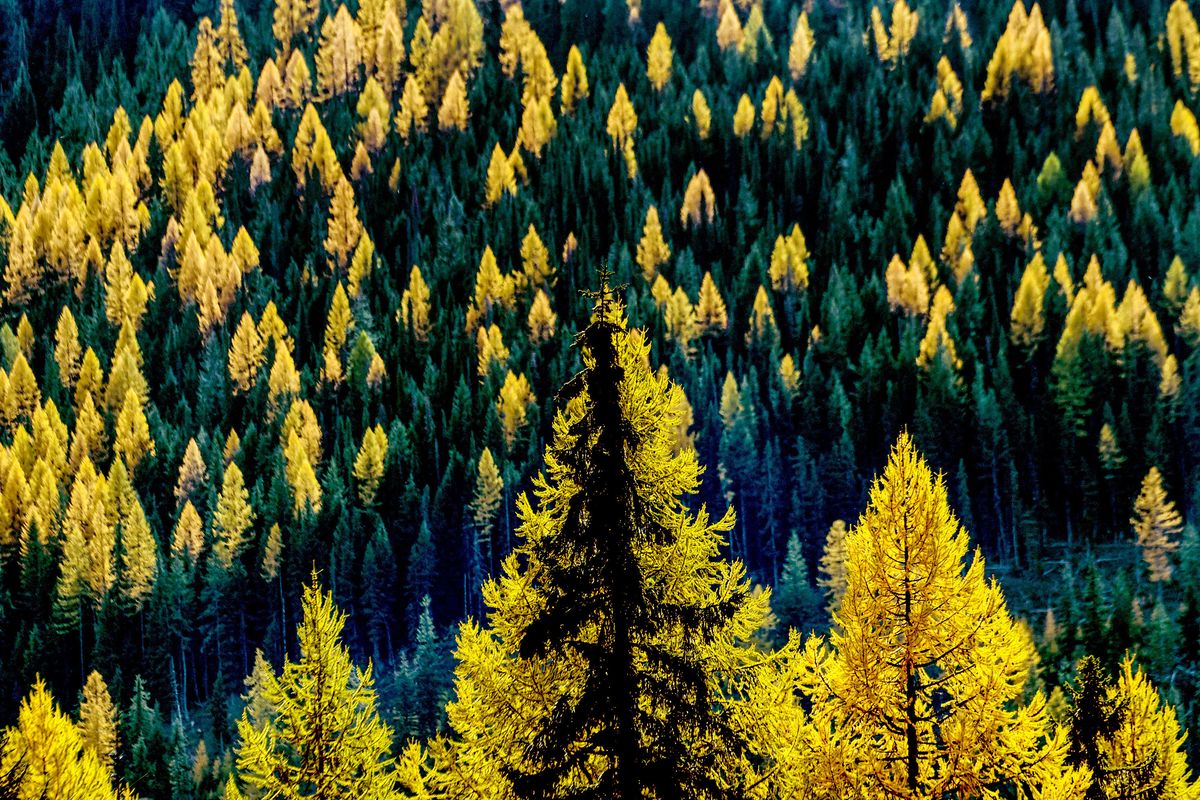The mountains are speckled with golden larches during October

If you were south of Coeur d’Alene, where Paul Zambino lives, last week, you probably wouldn’t even know the larch were there.
Not yet, anyway.
The needles of the larch – or tamarack, as this kind of deciduous conifer is also known – were the same dark green as the pine trees growing around them in southern Kootenai County, said Zambino, a U.S Forest Service plant pathologist who serves the Idaho Panhandle.
But head toward higher elevations and toward Montana, and the larches’ annual change was already well underway.
Entire mountainsides around Lookout Pass are covered with trees that looked like pines but whose needles had started to shift into seemingly every shade of green, while others had already made the more drastic switch to yellow or orange.
By the time you read this, the palette of the high country will be even more impressive, as the larches continue to reveal their difference from the evergreens around them.
But wait too long and all these bursts of color will have fallen to the forest floor, as the larches’ needles drop before snow starts to pile up.
“Trees do things because it helps them to survive in some way,” Zambino said. “And losing their needles may be the larch’s way of making sure it doesn’t have a really dense crown in winter that snow might cause the branches to break. Larches have kind of brittle branches. So for a larch, it makes a lot of sense not to have all of those extra needles.”
While most conifers hang onto most of their needles through the winter, Zambino said “all conifers will eventually lose some of their needles.”
Ponderosa pines, for example, tend to “look pretty ratty at the end of August,” before they start to “drop their oldest set of needles” in the fall, Zambino said.
That loss also represents an opportunity for gain.
“If you’re losing needles or if you’re losing a leaf, that gives the tree an opportunity to pull a lot of the nutrients out of that leaf or needle and store them in that tree,” Zambino said.
“It’s actually an active process for a tree to lose a needle,” he added.
In addition to extracting nutrients, a larch also forms “a layer between the needles and the branch that allows it to break off,” Zambino said. “And all of our deciduous trees do that.”
When exactly a specific larch begins the process of changing colors and dropping its needles is the result of a “combination of factors,” Zambino said, including genetics, declining daylight and the environment where it grows.
As for whether the deciduous conifers of the West should be called “larch” or “tamarack,” Zambino said the terms have become essentially interchangeable, even though they do indicate different species of the same genus.
“Larch is the name that we give to a group of conifers that all lose their needles,” he said.
The western larch, or Larix occidentalis, is what you are most like to find in the mountain ranges of the Rocky Mountains and the Pacific Northwest.
The term tamarack refers to Larix laricina, which is a somewhat smaller variety of larch that thrives in boggy areas and is more commonly found in the eastern United States and Canada.
Other species of larch can be found in cooler climates across the globe, including in Siberia and Japan.
And while a recent report indicated some 30% of tree species are threated with extinction by a warming climate, Zambino said larch have some features that could help them thrive.
“It is one of our trees that is resistant to root diseases,” he said. “And they have a very, very thick bark that allows them to survive fire – well, moderate fires. Not the most severe fires.”